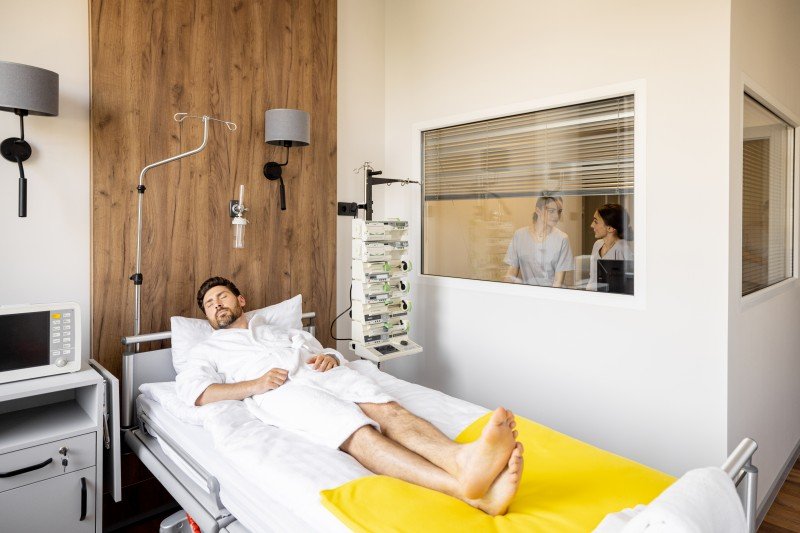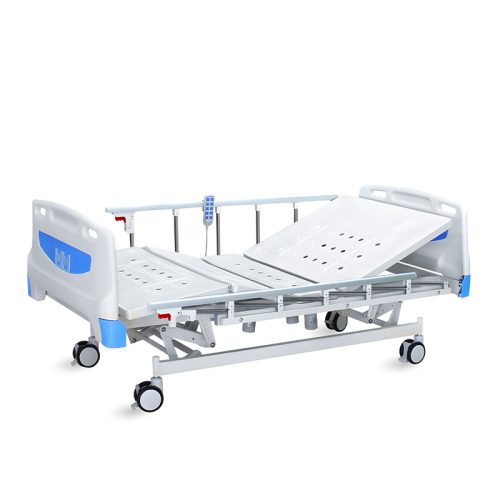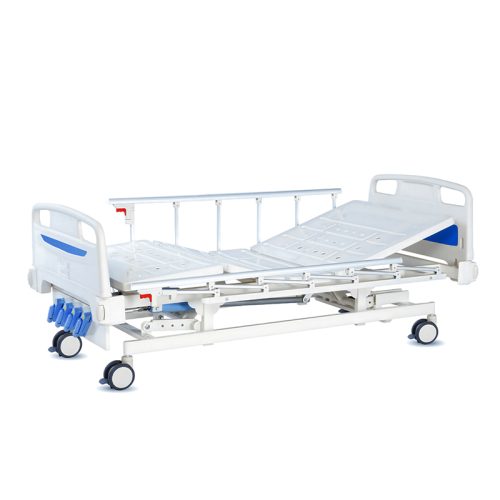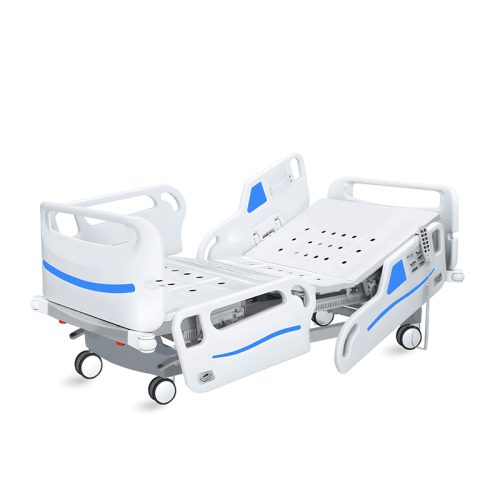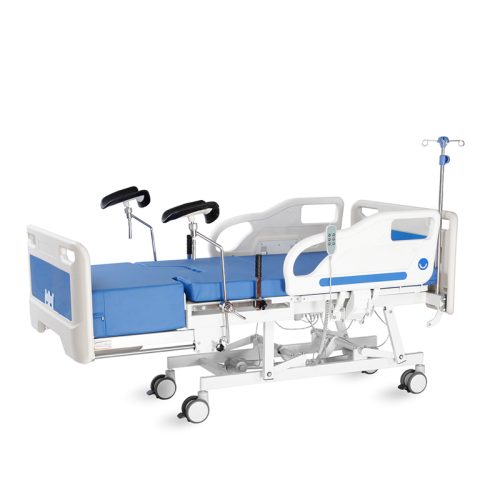
- Hospital Bed
Smart Beds in Healthcare: Revolutionizing Patient Care with Advanced Technology
- By kelingmedical
Healthcare distributors and dealers need to know all the main advantages and technical capabilities of smart beds. Your business can respond to customer needs by delivering advanced medical technology that helps patients recover better and makes caregiving work easier.
This article shows how smart beds differ from regular beds and explains their major features while discussing how they improve medical facilities.
1. What is a Smart Bed?
Smart beds combine medical functions with integrated technology to track patient health and automatically reposition themselves. Smart beds can watch patient health status while moving body positions and sharing data with hospital systems. Smart beds match medical bed functions with modern technology to help medical staff provide improved personalized healthcare.
Smart beds move to different positions and watch patient health data to send warnings to staff when problems arise while making medical records. Smart bed technology lets caregivers serve patients better and do less manual work to improve total healthcare quality.
2. Key Features of Smart Beds
These advanced beds feature different specialized functions that help patients rest better and stay protected. Here are some of the key features commonly found in smart medical beds:
Position Adjustment and Customization
Smart medical beds use automated controls to move their height and parts like backrest and footrest to match the best comfort position for patients. These special patients need their position adjusted often so smart beds help them stay comfortable.
Automatic Positioning: The bed moves itself to correct positions using information from real-time patient data.
Memory Settings: Smart beds let caregivers create and store patient comfort settings for quicker assistance.
Real-Time Monitoring and Alerts
Smart beds use built-in sensors to track a patient’s vital signs like their heart rate, blood pressure, blood oxygen levels, and skin temperature non-stop. The beds can identify health problems right away and tell the nursing team what is happening.
Vitals Monitoring: The smart bed monitors key health measurements at all times to show the patient’s current condition.
Alert System: The system sends notifications to caregivers as soon as vital sign measurements cross set limits.
Fall Detection and Prevention
Healthcare facilities face regular patient falls as a big problem especially among elderly patients and people who have limited mobility. Smart beds have built-in sensors that notify care teams when patients try to leave their beds unsafely.
Motion Sensors: Look for signs that the patient wants to get up or exit the bed.
Emergency Alerts: The system instantly notifies care providers through alerts if the patient moves past their set safe space.
Pressure Relief and Comfort
Pressure ulcers pose a major problem for bedridden patients but smart beds help prevent them through advanced pressure relief systems.
Smart Mattresses: Smart beds come with pressure-relieving mattresses that sense patient movement to protect against skin injuries.
Adjustable Air Cushions: They move pressure away from specific areas of the body that might get hurt.
Integrated Communication Systems
Patients can talk to their caregivers directly from their smart bed without having to get up.
Patient-Controlled Interface: Patients use a handheld device or a tablet located next to their bed to signal for help.
Two-way Communication: The patient and caregiver can speak with each other right away through this system to give faster treatment.
3. Benefits of Smart Beds
Smart beds help medical teams care better for patients while creating positive results in their treatment. Below are the most notable advantages of incorporating smart beds into a healthcare facility:
1. Improved Patient Comfort and Safety
Smart beds help patients feel better by moving their body position and checking their health signs automatically. Smart beds move patients from position to position to lower their pain and stop skin injuries from forming. The built-in fall detection systems on smart beds help prevent patient falls and keep patients safe.
2. Enhanced Caregiver Efficiency
The system sends immediate notifications to caregivers who can then take action before changes affect patient health. The smart bed system makes caregiving easier because it lets caregivers view patient health data and change bed positions from a distance. Smart beds help caregivers take care of more patients at the same time by letting them monitor patients from a distance instead of having to touch them directly.
3. Better Health Monitoring
Healthcare providers receive precise details about their patients’ medical status at all times thanks to this system. Healthcare teams can identify problems before they get serious by looking at this information to help patients get better faster. Caregivers can view patient health information from any location which helps them work more effectively with other medical professionals.
4. Reduced Hospital Acquired Conditions
Smart beds equipped with pressure relief features and adjustable settings prevent hospital-acquired pressure ulcers in patients who must remain bedridden. When patients receive correct body support and comfort from smart beds they stay healthier.
5. Cost Efficiency and Resource Management
Healthcare facilities save money over time as smart beds need upfront spending but create lasting operational advantages. Smart bed technology minimizes manual adjustment work which helps medical staff concentrate on essential patient care duties. Smart beds help prevent medical issues which decreases hospital admissions and lowers healthcare expenses.
4. Market Outlook and Opportunities
The worldwide demand for intelligent beds soars because technology improves and more elderly people need care plus healthcare providers focus on treating each patient individually. Healthcare providers need smart beds to improve care quality and run their operations better which increases market demand.
Medical equipment distributors and dealers can profit from selling smart beds because hospitals, nursing homes, and home healthcare providers need this technology more than ever. By working with smart bed technology producers you help healthcare facilities achieve better patient care results and safer environments.
Conclusion
Advanced technology and basic safety elements unite to create smart beds which advance healthcare performance. Smart beds help healthcare workers give better patient care by letting them track patients better while adjusting their position and communicating with other staff. Medical equipment distributors stand to gain new business opportunities because health care providers will need more smart beds in the future.
Smart beds help patients achieve better results while making caregivers work faster and safer which results in long-term cost reduction. Healthcare distributors who invest in smart beds give their customers access to modern medical technology.
Call-to-Action
Do you want to be our customer’s medical equipment partner for smart bed technology? Call us right now to review our innovative smart beds and discover how they can make care safer for patients at your medical center.
📧 Email: inquiry@shkeling.com
🌐 Website: www.shkeling.com.cn
We look forward to building a successful partnership with you!

